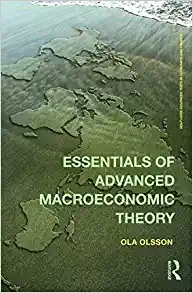Question
appropriately summarize the text The Great Recession in Black Wealth. By Wicks-Lim, Jeannette The Great Recession produced the largest setback in racial wealth equality in
appropriately summarize the text
The Great Recession in Black Wealth.By Wicks-Lim, Jeannette
The Great Recession produced the largest setback in racialwealthequality in the United States over the last 25 years. In 2009 the averagewhitehousehold'swealthwas 20 times that of the averageblackhousehold, nearly double that in previous years, according to a 2011 report by the Pew Research Center.
Driving this surge in inequality is a devastating drop inblackwealth. The typicalblackhousehold in 2009 was left with lesswealththan at any time since 1984 after correcting for inflation.
It's important to rememberwealth's special role--different from income--in supporting a household's economic well-being. Income pays for everyday expenses--groceries, clothes, and gas. A family'swealth, or net worth, includes all the assets they've built up overtime (e.g., savings account, retirement fund, home, car) minus any money they owe (e.g., school loans, credit card debt, mortgage). Access to suchwealthdetermines whether a layoff or medical crisis creates a bump in the road, or pushes a household off a financial cliff.Wealthcan also provide families with financial steppingstones to advance up the economic ladder--such as money for college tuition, or a down payment on a house.
Racialwealthinequality in the United States has always been severe. In 2004, for example, the typicalblackhousehold had just one dollar in net worth for every 11 dollars of a typicalwhitehousehold. This is because families slowly accumulatewealthover their lifetime and across generations.Wealth, consequently, ties the economic fortunes of today's house holds to the explicitly racist economic institutions in America's past--especially those that existed during key phases ofwealthredistribution. For example, the Homesteading Act of 1862 directed the large-scale transfer of government owned land nearly exclusively towhitehouseholds. Also starting in the 1930s, the Federal Housing Authority made a major push to subsidize home mortgages--for primarilywhiteneighborhoods. On top of that, Jim Crow Laws--in effect until the mid-1960s--and racial violence severely curtailed efforts by theblackcommunity to start their own businesses to generate their ownwealth.
The housing market crisis and the Great Recession made racialwealthinequality yet worse for two reasons. First, thewealthof blacks is more concentrated in their homes than thewealthof theirwhitecounterparts. Homes ofblackfamilies make up 59% of their net worth compared to 44% amongwhitefamilies.Whitehouseholds typically hold more of other types of assets like stocks and IRA accounts. So when the housing crisis hit, driving down the value of homes and pushing up foreclosure rates,blackhouseholds lost a much greater share of theirwealththan didwhitehouseholds.
Second, mortgage brokers and lenders marketed subprime mortgages specifically toblackhouseholds. Subprime mortgages are high-interest loans that are supposed to increase access to home financing for risky borrowers--those with a shaky credit history or low income. But these high-cost loans were disproportionately peddled toblackhouseholds, even to those that could qualify for conventional loans. One study estimated that in 2007 nearly double the share of upper-incomeblackhouseholds (54%) had high-cost mortgages compared to low-incomewhitehouseholds (28%).
Subprime mortgages drain awaywealththrough high fees and interest payments. Worse, predatory lending practices disguise the high-cost of these loans with initially low payments. Payments then shoot up, often leading to default and foreclosure, wiping out a family's home equitywealth. In 2006, Mike Calhoun, president of the Center for Responsible Lending, predicted that the surge of subprime lending within theblackcommunity would" ... likely be the largest loss of African-Americanwealththat we have ever seen, wiping out a generation of homewealthbuilding." It was a prescient prediction.
To reverse the rise in racialwealthinequality, we need policies that specifically buildwealthamongblackhouseholds, such as the "baby bonds" program proposed by economists William Darity of Duke University and Darrick Hamilton of The New School. Baby bonds would be federally managed, interest-bearing trusts given to the newborns of asset-poor families and could be as large as $50,000 to $60,000 for the most asset-poor. By using awealthmeans-test, this program would disproportionately benefitblackcommunities while avoiding the controversy of a reparations policy. When recipients reach age 18, they could use the funds for a house down payment, tuition, or to start a business. This program would cost about $60 billion per year, which could easily be covered by letting the Bush-era tax cuts expire for the top 1% of income earners.
Step by Step Solution
There are 3 Steps involved in it
Step: 1

Get Instant Access to Expert-Tailored Solutions
See step-by-step solutions with expert insights and AI powered tools for academic success
Step: 2

Step: 3

Ace Your Homework with AI
Get the answers you need in no time with our AI-driven, step-by-step assistance
Get Started


